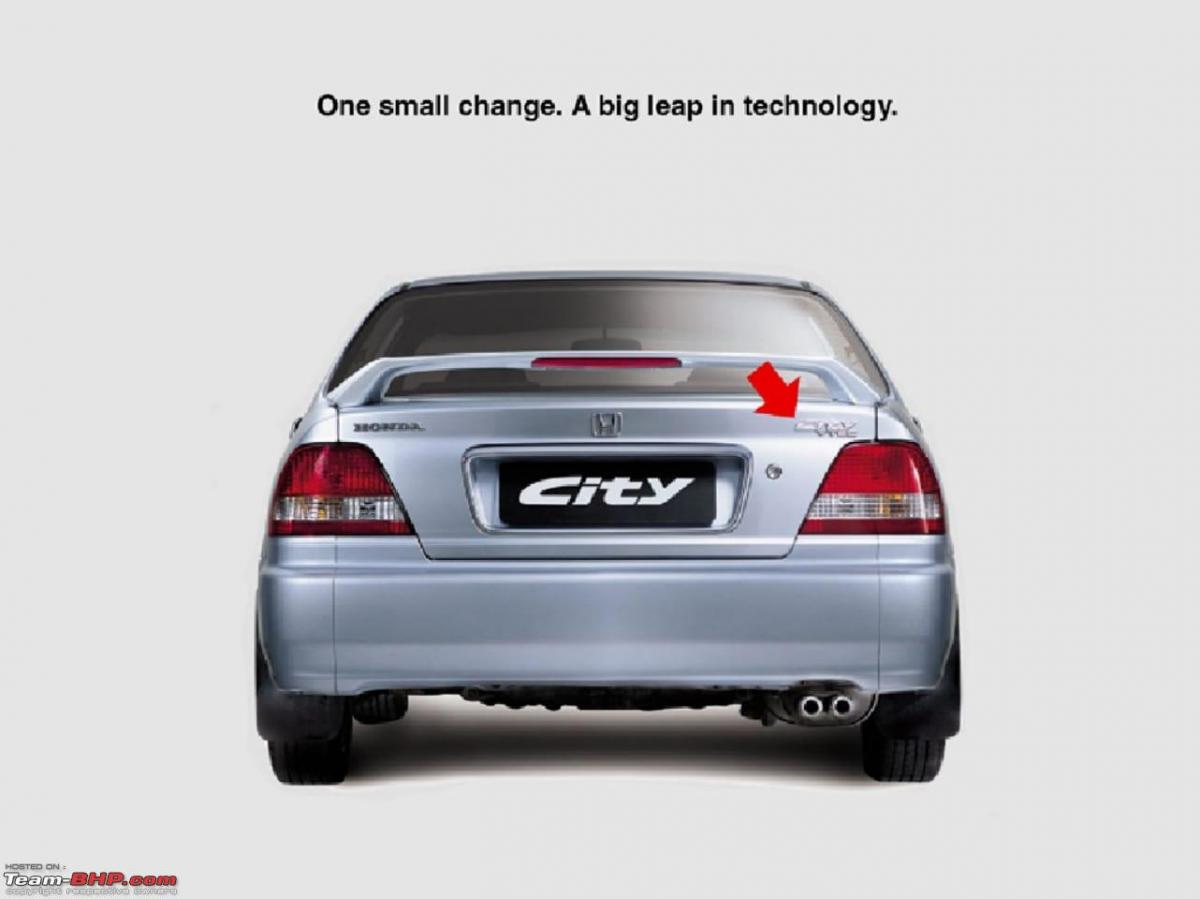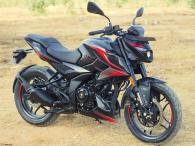News
Tribute to the good old 1st generation Honda City 1.5 VTEC
But Honda thought of fitting the Indian-spec City with the 1.5-litre engine featuring the variable valve timing and lift electronic control system technology which was featured on S2000 as well as the NSX. The performance of the regular City 1.5 was talked about in the superlatives, and the VTEC variant was expected to be something else.
BHPian Shreyfiesta recently shared this with other enthusiasts.
Old Honda City 1.5 VTEC - A City of Joy, from the 2000s
After the economic liberalisation in India in 1991, there had been a drastic change in the Indian car market. Since then, speculations were on as to when Honda would introduce a car in India officially. Even before the company's official entry, the Honda brand was so popular among Indian people as we had many imported models on our roads like the Civic, Accord, Odyssey, etc. After the JDM personal import boom caught the imagination of Indian buyers, by the early-90s there were tons of Hondas in India. Those Indians who desired a sleek Japanese vehicle were able to own one, thanks to the importers who took on local compliance of the cars. It is still possible to see these imported cars lying abandoned in various parts of our country, this is mainly due to the difficulty in sourcing spare parts.
Honda officially entered into the Indian market through a JV with Siel Group in January 1998. The City was Honda's first offering to an emerging middle class in India that was desperate for an affordable luxury car. Those were the days when mid-range luxury car buyers wanted something larger than Maruti Esteem but did not want to buy a Ford Escort or an Opel Astra. The City was essentially a perfect recipe for a brand building exercise in a country like ours. It was introduced here in four variants : 1.3 LXI, 1.3 EXI, 1.5 EXI and 1.5 EXI-S, priced from Rs. 6.3lakh onwards. The 1.5 EXI grade itself was available with both manual and torque-converter automatic transmission options.
Being the best-seller in mid-sized sedan segment, the City quickly became the backbone of Honda in India. Over and above the features of 1.3, the 1.5 EXI always had a tachometer, different stereo, chrome trim around the side windows, blacked-out B-Pillar, digital clock, driver's armrest, wooden-finished centre console, electrically adjustable ORVMs, body-coloured door handles and ORVMs, etc. Later, Honda added more value to the City by bringing few additional convenience and utility features. A new colour called 'Emerald Green' was also introduced in end-1998. The top-end EXI-S variant came fitted with five-spoke alloy wheels, rear spoiler from HMSL, cassette player with four speakers, and a very subtle side skirt. Also, the 'Monte Carlo Blue Pearl' shade was exclusive for the EXI-S.
The City was manufactured at Honda's Greater Noida facility in Uttar Pradesh, which had an installed capacity of 30,000 cars per annum. It was ranked the 'best midsize car in initial quality' and the 'most appealing mid-size car' by JD Power and Associates in 1999. The City had achieved a market share of 23 percent of the mid-size car market in 1998-99. Originally, the sedan had two engine options when launched in 1998, a 1.3-litre petrol and a 1.5-litre petrol. The 1.3-litre petrol was capable enough to churn out a peak power of 90bhp at 6500rpm and peak torque of 111Nm at 4700rpm. The 1.5-litre petrol generated 100bhp at 6500rpm and 128Nm at 4600rpm, and this unit used to hit 100kph under 11 seconds.
Back in the nineties, owning a Honda was almost like owning a Sony Walkman, a status symbol of sorts in the world of me-too Japanese and Korean clones. The pre-facelift Honda City was not a photogenic car in any manner, but in flesh, the car looked quite smart. Once you had a decent stretch of road, the big hearted City was really an entertaining car to drive. Those who used to drive Esteems knew what it felt like to have a silent, reliable, hardworking engine under the hood. If fuel efficiency was a concern, the Honda City was worth every rupee spent and those people who still complained, got explosive performance as a bonus.




November 1999 facelift:
While most other manufacturers used to wait for sales to drop before refreshing a model, Honda brought the facelifted City within 2 years, when the model was selling like hot cakes. The main areas of change were with the interiors, stereo and rear suspension. Along with this, the front and rear appearance also were modified, with a clear-vision headlamp console, raked hood, wider bumper with fog lamp slot and broader radiator grille. At the rear, City received wraparound taillights, the trunk lid got redesigned and the rear bumper also got redesigned. This resulted in a change of the overall length, adding 45mm, bringing it to 4270mm. Prices reflected an increase of approximately 2-3 percent over the prices of the older model.
The facelifted City was originally released in four variants:
- 1.3 LXI, priced at Rs. 6.3lakh ex-showroom
- 1.3 EXI, priced at Rs. 6.8lakh ex-showroom
- 1.5 EXI, priced at Rs. 7.5 lakh ex-showroom
- 1.5 EXI AT, priced at Rs. 8.0lakh ex-showroom
It was sold here in seven different colours options such as Frost White, Sapphire Silver Metallic, Heather Mist Metallic, Maharajah Gold, Emerald Green Pearl, Inza Red Pearl and Adriatic Blue Pearl.


August 2000, the entry of a legend:
Back in the day, Honda was the one and only car manufacturer who was not shy of giving India hi-tech products. The Honda City 1.5 used to be a great car in the Indian context, basic 1.3 variants also were decent in terms of performance and refinement. Honda was internationally a petrol passenger car manufacturer, they had no heavy automobiles like trucks or buses. They weren't even interested to know about diesel technology. But Honda thought of fitting the Indian-spec City with the 1.5-litre engine featuring the variable valve timing and lift electronic control system technology that was featured on theS2000 as well as the NSX. The performance of the regular City 1.5 was talked about in the superlatives and the VTEC variant was expected to be something else.

India's hardcore car enthusiasts tasted VTEC technology for the first time in August 2000. Priced at around Rs. 9.5lakh ex-showroom, the VTEC variant was positioned as the top-spec variant of the City. For people who drove the Lancer and Ikon 1.6 till then, the Honda City VTEC was a fresh breath of air. With Honda's VTEC technology, the City was one of the most technologically advanced car being sold in the country at that time. Mitsubishi had launched an SFX variant of the Lancer in January 2000, but it never attempted anything under the hood which was what Honda built upon in the City VTEC. Since the 1.5 VTEC variant was almost Rs. 90,000 more expensive than the regular 1.5 EXI, people actually felt a bit skeptical paying so much extra for a technology that had no outward physical manifestation.
A Honda City VTEC being tested by BS Motoring in August 2000. Sorry for the poor quality image:

Eeverything about the Honda City 1.5 VTEC:
Exterior and Interior:
The Honda City VTEC was quite understated. Viewed front-on, it presented the identical handsome lines of its siblings, the City 1.3 and the 1.5. It had the same raked and aggressive clear lens and multi-reflector headlamps, the same sleek hood climbing up along two diverging grooves to the large windshield, the same three-piece bumper assembly. Certain sporty accents appeared on the VTEC-engined sedan with the double barrelled 'shotgun' tailpipes, trunk spoiler with high-mounted stop lamp and chrome-garnished license plate slot being obvious ones. Apart from the VTEC legend on the engine cam cover, the only other place where it appeared was below the City badge on the boot lid. Of course, the VTEC badging, worn quietly on the boot lid, promised much to automobile enthusiasts.
Would you like to see a low-slung Japanese sedan on Indian roads again?

The car was a good-looker from the rear too. Look at the 'VTEC Special' spoiler, double barelled tailpipes, etc.

The 14-inch six-spoke alloys originally wore Bridgestone's 65 aspect ratio S322 rubber which in the overall scheme of things, got gearing to near enough the same as the non-VTEC City 1.5, but the dynamic ability was sharpened. Inside, the cabin gained character, the black plastics were spruced up with the incorporation of brushed metal accents on the centre console, the air-con vents and the front power window controls. A high-end Alpine-branded audio system, better fabric upholstery, see-through headrests, a leather-wrapped steering wheel and gear knob brought an additional sigh of relief into the interior package. The City's sporty nature was taken to newer heights in the design department, thanks to cosmetic enhancements.
Inside, the overall layout was typical Honda. Everything felt good to look at and were clearly laid-out too:

Legroom at the rear was quite decent and two seat belts were standard for the back seat. The City being a low-slung sedan, the rear seating position was too low for the passengers, and this compromised comfort also to an extent. For the same reason, egress and ingress was very difficult for elderly people. Many people expected the City VTEC to have improved interiors from the regular 1.3 and 1.5 variants, but they were sorely disappointed when the car came out. For the fact to be said, the City's interiors were nowhere close to that of the Opel Astra.
This was a car that cradled the driver in a low-slung sports car seat. The metal-finished accents lent it a great degree of chic that most owners loved:

Headlining was the hanger type, and not the moulded version that we used to see in cheaper hatchbacks and sedans. Height adjustment for the driver's and tilt-adjustable steering were not provided. Like all other variants of the City, this 1.5 VTEC also had three-piece bumpers. It is said that these bumpers were made in three separate pieces to allow easy shipping from Japan. In case if the bumper got any scratch or dent, the user could just buy a replacement piece from the workshop rather than waiting for a whole new bumper to arrive.
Shown in the picture is a City VTEC with three-piece rear bumper. Pre-facelift cars also had the same kind of bumpers:

Suspension and Ride Quality:
The City was a car with a bare-basic rear suspension setup. With an independent strut with trapezoid link assembly, the vehicle fell short of the ride and handling package offered by the most of the competition in its class, and even some cars in the one-lower segment. Ride was on the firm side and this was not suitable for those who were used to the plush ride of Ford Escorts and Daewoo Cielos. What saved it to an extent were the superb wheels that came as part of the package, the tyres showed absolutely no signs of traction loss, except when they were called to work at speed and handling parameters beyond the abilities of the suspension setup. The standard, stiffly damped units seen in all Honda Citys produced in India, and were the same units sold as the sports option in Thailand.
The basic four-link suspension at rear. Picture from Autocar India's August 2000 issue:

Performance and Handling:
If you thought that the fifth-generation City is smooth, then you have to try the first-generation City VTEC too! What greets us when we open the hood is a SOHC, 16V four-cylinder 1.5-litre VTEC mill that generates 106bhp at 6800 revs and 132Nm of torque at 4700 revs. Sounds poor by today's standards, but how about hitting 60kmph figure in just 4.85 seconds, a 0-100 kmph in 10.35 seconds, and a fantastic mid-range that promises a passing speed (80-120 kmph) figure of 8.25 seconds? Truth to be told, this particular engine did a good job of saving all the fun up until 5000 rpm, post which, the VTEC KICKED IN YO! The good part was that the increase in torque was right across the rpm range, it went up by about the same 4Nm at the corresponding rpm.
A closer look at the engine bay. Picture from Autocar India's August 2000 issue:

Another interesting thing to note here is that this same engine had a peak power output of 120bhp in most Asian countries and the unit was detuned to make it compatible for the quality of fuel available in India. The gearbox remained same as that on the non-VTEC City 1.5. Despite everything being nearly the same, the gearshift quality was somewhat of an improvement on the City 1.5. Brilliance of the VTEC technology hits us with full force when pushed hard, 0 to 100kmph time of under 10 seconds was top class back then, but the engine hit the rev limiter just 2kmph short of the 100kmph mark in second gear. This begged a shift from second to third gear just before 100kmph. If another fraction of a second was gone, the VTEC would have beaten the times of a Mercedes Benz E240 (W210). The VTEC valve gear contributed to a greater increase in mid-range thrust which was where the Indian motoring was mainly focused on.
Data from the 0-100kmph test conducted by Overdrive in September 2001. City VTEC was ranked third position after W220 S-Class and W210 E-Class.

What is VTEC?
Most car manufacturers used to offer high tech engines with engine control modules that were able to vary the valve timing, but there were none which had ability to control the lift of the valves at the same time. Honda through various R&D activities, developed a valve train mechanism called the variable valve timing and lift electronic control system (VTEC). With this mechanism, it was possible to simultaneously change both the timing and the degree of lift for intake and exhaust valves.
Basically, this mechanism was very simple in design and excelled in efficiency and reliability. It was possible to maximize power output in both the high and low rpm range or increase economy in the high or low rpm range. Different combinations of the above also can be achieved by varying the profile of the cam lobes on the camshaft of engines having four valves per cylinder. Before the City, Honda had put many variants of this technology into production.
The SOHC VTEC was the one used in the Honda City. One of the intake valves opened normally, while the other one opened only slightly during normal operation. In the Honda Insight, only one of the intake valves was in operation under normal conditions while the other one remained shut and opened only when needed. The intake valve which opened with a low lift began opening higher when the engine control module sensed the need for power or when the engine was operating at higher rpms.
This switch was achieved by having a mid rocker arm and a third cam lobe. These multiple cam lobes per cylinder provided one valve timing and lift profile at low speeds and a different cam lobe profile at high speeds. The switch from one profile to another was controlled electronically and was selected by monitoring various inputs like current engine speed and load. The mid rocker arm was equipped with a supplementary spring with a lost-motion function for reducing the amount of arm play at low speed rpm range, and made the valve movement smoother in high speed range.
When driven at high rpm, it was recognized as such by the electronic control module, then a piston moved right across the three rocker arms. As a result, the primary, secondary and the mid rocker arms were linked together and the three rocker arms were moved as a single unit. The motion of these linked rocker arms was regulated by the cam lobe the profile of which was made for high lift and the valve timing of this also was set for high operations. The movement of the piston which linked rocker arms was hydraulically made, the pressure created by a solenoid was activated by the electronic control module.
Due to the demands made by this mechanism, Honda adopted long lasting cast steel camshafts and light high strength thin stem exhaust valves. Though the system adopted in India was not geared for high performance, a 1.6-litre Honda production engine with VTEC technology produced about 160bhp, or specific output close to 100bhp/litre. In the case of the City VTEC's engine, the technology enhanced both intake and combustion efficiency throughout the entire rpm range. The final result was an effortless city driving, extra power for highway driving, fuel efficiency and lower emissions.
Continue reading on the tribute to the old Honda City 1.5 VTEC for BHPian comments, more insights and information.























